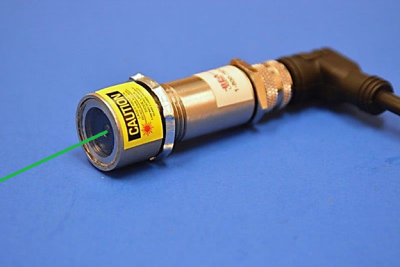
BEA Lasers has announced the introduction of a new lens for use with its MIL series lasers. The E²L Extreme Environment Lens incorporates a quartz glass lens into the end ferrule, providing resistance to harsh or extreme environmental conditions, such as welding arc flash, abrasives, dust and coolant.
The MIL series laser diode modules utilize a low profile 3/8” rugged laser housing, fitted with a M12 connector, a 2-meter long PVC jacketed cable and an integrated power supply. An optional sensor-style bracket, or multiple-adjustable “LB” bracket, completes the laser system. The MIL Series laser diode modules are offered with standard 520nm (green) or standard 635nm (red), with 1mW or 5mW output power. Dot, line or cross-hair patterns are offered as standard.
The MIL Compact is a low-profile laser diode module that occupies 1.5” of space, a much smaller profile then other lasers intended for industrial applications.
The MIL RA and MIL Compact series laser modules are typically used for alignment and leveling applications. They are ideal for counting, machine vision, edge detection, paper web, riveting and water jet cutting alignment, to name just a few.
Contact Details
Related Glossary Terms
- coolant
coolant
Fluid that reduces temperature buildup at the tool/workpiece interface during machining. Normally takes the form of a liquid such as soluble or chemical mixtures (semisynthetic, synthetic) but can be pressurized air or other gas. Because of water’s ability to absorb great quantities of heat, it is widely used as a coolant and vehicle for various cutting compounds, with the water-to-compound ratio varying with the machining task. See cutting fluid; semisynthetic cutting fluid; soluble-oil cutting fluid; synthetic cutting fluid.
- flash
flash
Thin web or film of metal on a casting that occurs at die partings and around air vents and movable cores. This excess metal is due to necessary working and operating clearances in a die. Flash also is the excess material squeezed out of the cavity as a compression mold closes or as pressure is applied to the cavity.
- web
web
On a rotating tool, the portion of the tool body that joins the lands. Web is thicker at the shank end, relative to the point end, providing maximum torsional strength.
